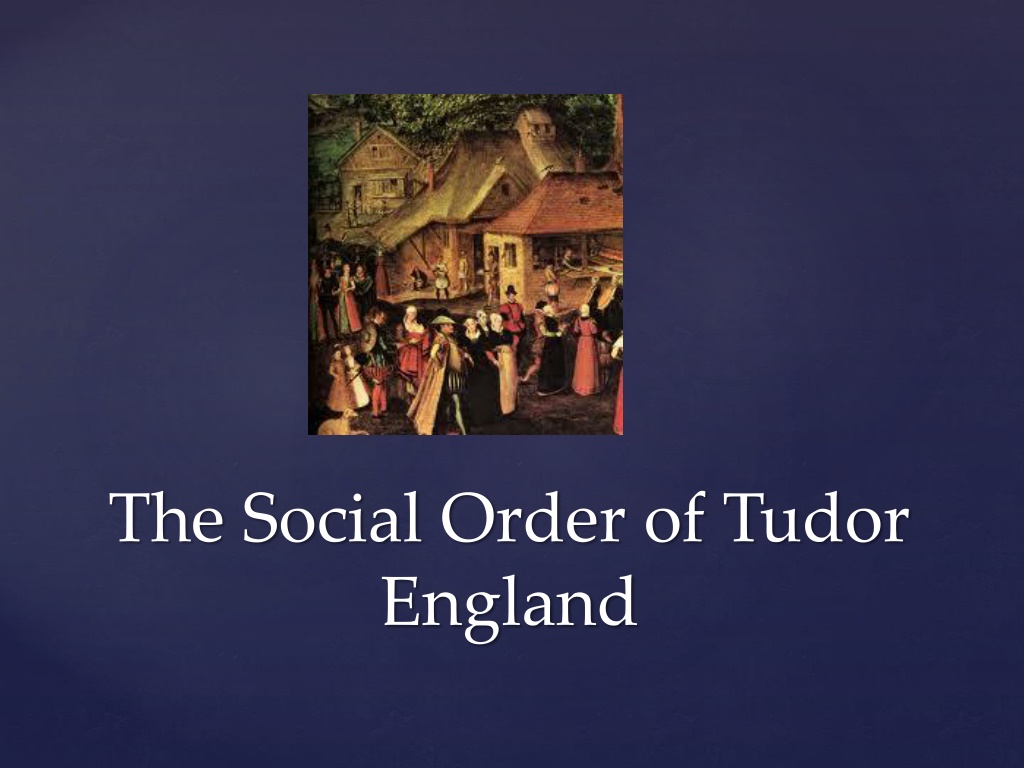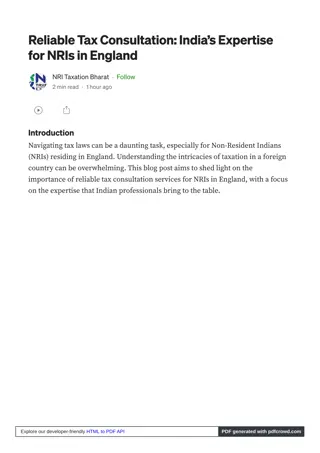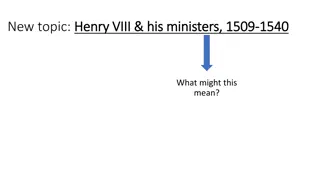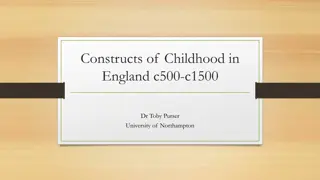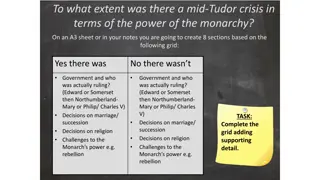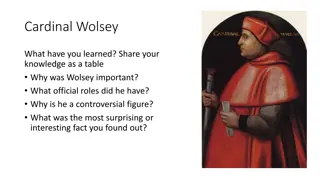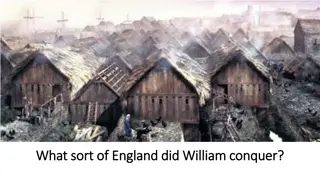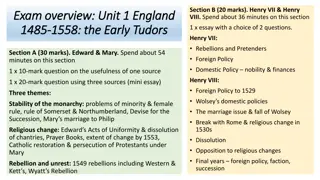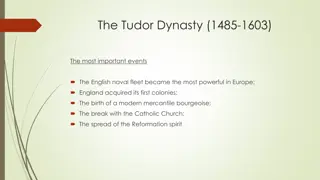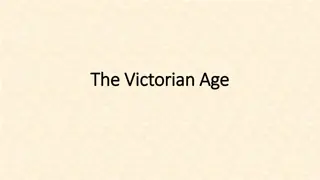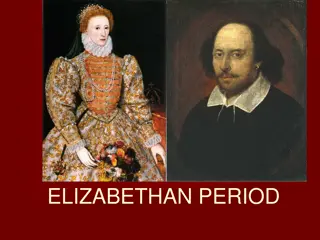Social Structure of Tudor England
The social order of Tudor England under William Harrison's categorization encompassed gentlemen, citizens, yeomen, and artificers/laborers, each with distinct roles and status based on birth and occupation. The hierarchy ranged from the ruling monarch, through the peerage to commoners, reflecting a stratified society dependent on lineage and economic activity.
Uploaded on Feb 23, 2025 | 0 Views
Download Presentation

Please find below an Image/Link to download the presentation.
The content on the website is provided AS IS for your information and personal use only. It may not be sold, licensed, or shared on other websites without obtaining consent from the author.If you encounter any issues during the download, it is possible that the publisher has removed the file from their server.
You are allowed to download the files provided on this website for personal or commercial use, subject to the condition that they are used lawfully. All files are the property of their respective owners.
The content on the website is provided AS IS for your information and personal use only. It may not be sold, licensed, or shared on other websites without obtaining consent from the author.
E N D
Presentation Transcript
The Social Order of Tudor England
In his 1577 Description of England, William Harrison listed four separate social categories, each with numerous subdivisions: 1) gentlemen, 2), citizens and burgesses, 3) yeomen and husbandmen, and 4) artificers and laborers. In all the orders, a woman's status depended on that of her father when unmarried and her husband when married. http://www.fordham.edu/halsall/mod/1577harrison- england.html#Chapter%20I
The top of category #1 was the ruler who acquired his throne through primogeniture and ruled by divine right. Under the king was the peerage, consisting (in order of precedence) of dukes, marquesses, earls, viscounts, and barons. The average annual income of a peer was 1000. Harrison put some non-peers also in category #1: knights, esquires, and gentlemen. These men derived their wealth from land and disdained manual labor.
Category #2 consisted of wealthy individuals who had to work for their living. A Citizen was a tradesman or merchant with certain specified business privileges; a burgess was an eminent citizen who had served his town politically.
In category #3 yeoman usually owned or leased a farm of 100 or 200 acres, and because they were at least 40 s. freeholders they were entitled to vote in parliamentary elections. Husbandmen farmed rented land of about 30 acres.
Category #4 consisted of those whom Harrison said had "neither voice nor authority in the commonwealth, but are to be ruled and not to rule others."
